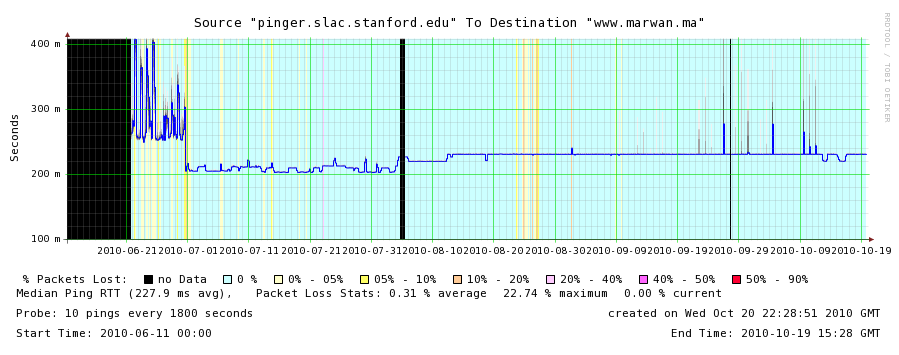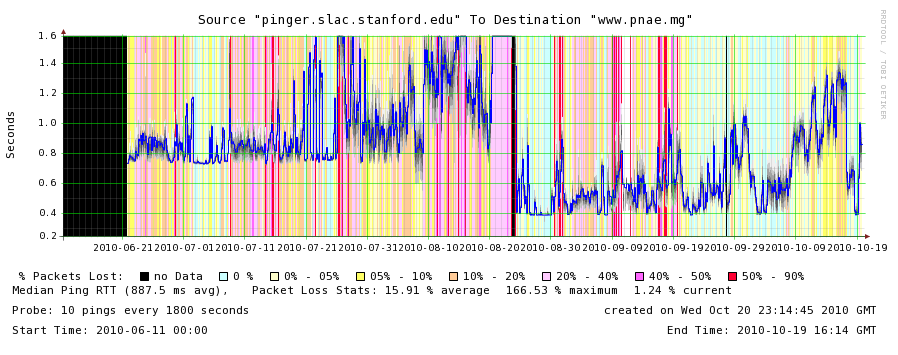...
To show the effects of these cables coming online, we shall consider minimum RTTs and jitter. We should see a considerable decrease in the minimum RTT and jitter for hosts that have direct connection with active submarine cables.
a). MaIN OnE (phase 1) landing points, inaugurated July 2010
Morocco
We have three PingER nodes in Morocco. The node www.agpe.ma shows no particular change in minimum RTT due to MaIN OnE coming online. The node was experiencing problems before and during June but reappeared in late June. There were considerable spikes during July with minimum RTTs jumping around. This might be due to day/night differences in internet traffic. This could also be due to reconfiguration of routing tables because of shifting to new cable system. This might suggest the reason for decrease in spikes because of more available bandwidth.
...
There is a noticeable difference in the minimum RTTs for the node at www.marwan.ma. The RTT drops from 250ms in June to 200ms in July and then stabilizes around 230ms from August onwards. It is interesting to observe the spikes in the month of June when the MaIN OnE wasn't online and the sudden drop in RTT during July. It is also interesting to note the stability of minimum RTTs after July.
b). EASSy landing points, inaugurated August 2010
Madagascar
The www.pnae.mg host in Madagascar shows substantial change in minimum RTT. Before the deployment of EASSy cable system, this host was connected to rest of the world via a satellite link, reporting minimum RTT of 642ms in February. But in August things changed as the minimum RTT dropped to a reasonable reading of 370ms. However it must be added that the performance is still not stable. This might be due to day/night internet traffic quantity.
c). LION landing points, inaugurated March 2010
PingER hosts do not report any appreciable difference in minimum RTTs since the deployment of LION cable system.
...

